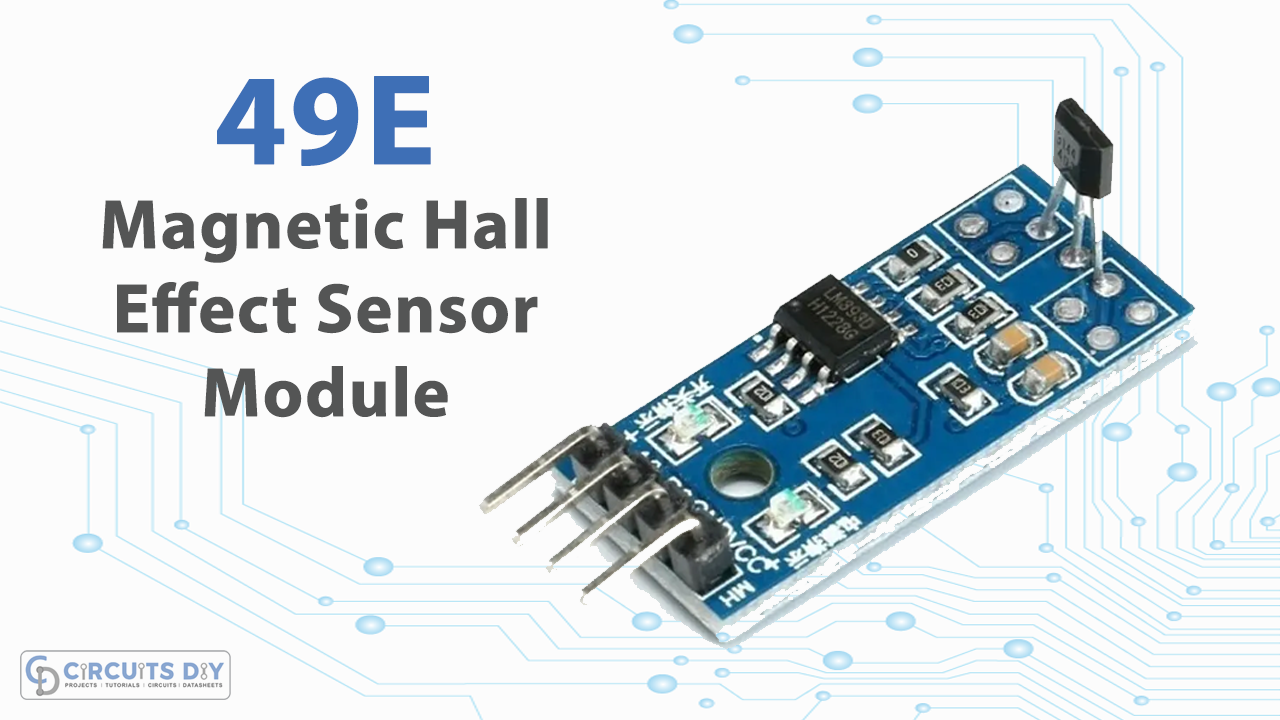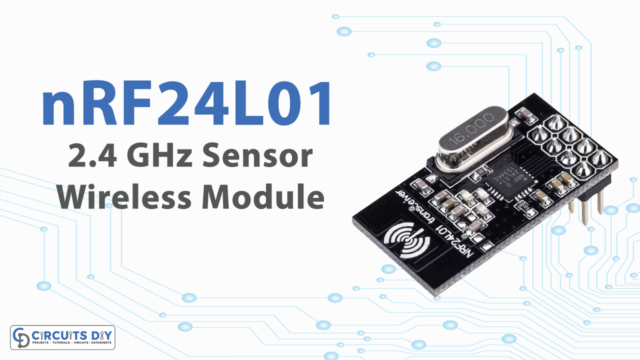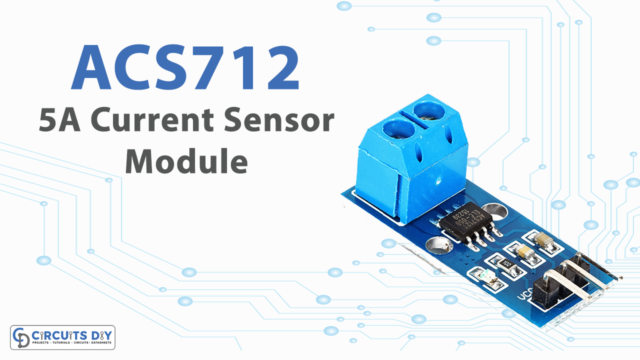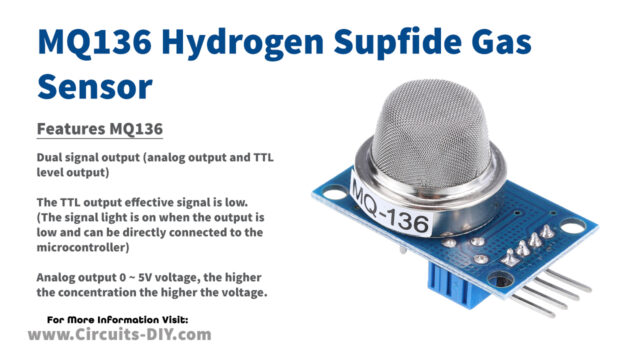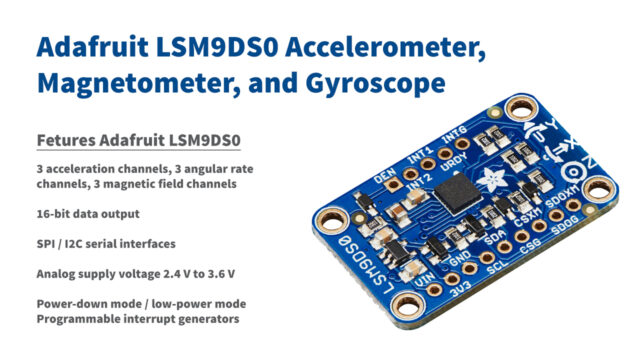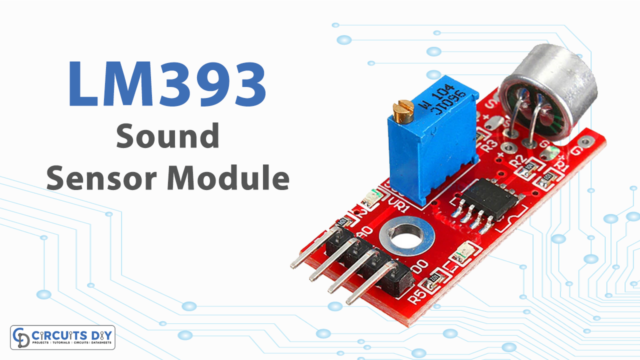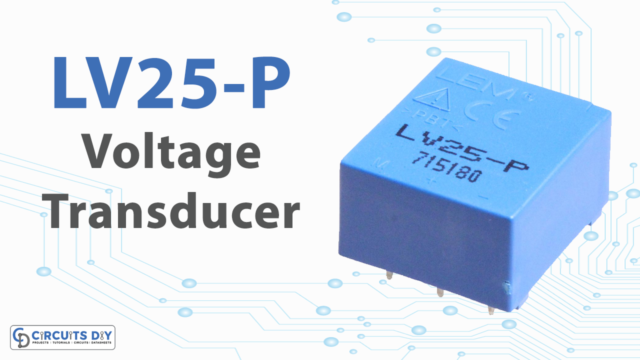An Overview of 49E Linear Magnetic Hall Effect Sensor
The Hall Effect Magnetic and Proximity Sensor Module detects nearby objects such as magnets. The 49E sensor is a small functional linear Hall-effect sensor that is operated by the magnetic field created through a permanent magnet or an electromagnet. The supply voltage sets the linear sourcing output voltage and ranges in proportion to the strength of the magnetic field.

Working
This Hall Sensor Module has Hall Sensor which measures the Hall Effect. It estimates the production of a voltage difference across an electrical conductor, transverse to an electric current in the conductor, and a magnetic field perpendicular to the current. The output of the Hall sensor turns low and turns on when a magnetic field perpendicular to the Hall sensor increased more than the BOP threshold, and it turns high and turns on when the magnetic field dissipates. The comparator circuit makes the output signal more reliable.
Interfacing with Microcontroller
To interface this magnetic sensor with a microcontroller, we should connect it to an analog/digital input pin of the controller. The output will read approximately 1/2 Vcc with no magnetic field present. When a magnetic field comes near, the voltage will change linearly at a rate of 2.5mV / G. G (Gauss) is known as the unit measure for magnetism.
Features and specifications of 49E Linear Magnetic Sensor Board
Features
- Good linearity and high sensitivity(1.4 ~3.0mV/GS optional)
- Miniature Construction
- Low-voltage operation down to 2.3 Vdc
- Single current sourcing output
- Linear output for circuit design flexibility
- Low noise output virtually eliminates the need for filtering
- Responds to either positive or negative gauss
Specifications
- Power supply voltage: 3.3v to 5.5v
- The current of the signal output can be up to 16mA
- With the comparator circuit, The output signal is more reliability
- Breakout PINs
- VCC:3.3V to 5.5v
- GND: GND
- DO: Digital Output, Output Low when there is a magnetic field
- AO: Analog Output,
- Dimension: 32mm x 14mm
- 3mm screw hole
- Power supply indicator and Digital output indicator
Pinouts of Sensor
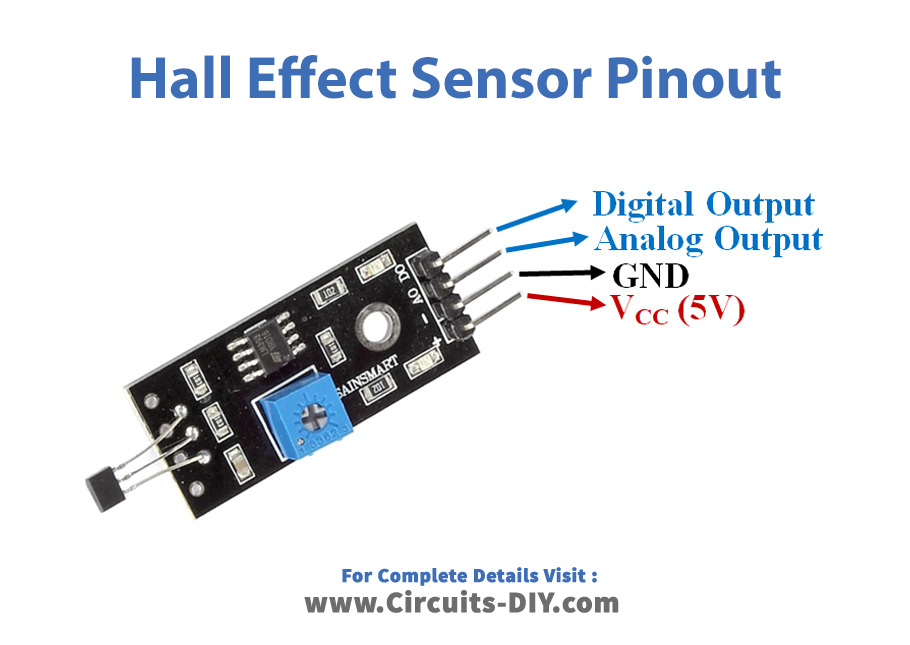
| Pin Name | Description |
| Vcc | Supply Pin (typically requires 5V) |
| GND | The ground needs to be connected to the system’s ground |
| AO | Analog output |
| DO | Digital output |
Applications of Hall effect Sensor Module
Current Sensing
There are many interests to use hall IC for current measurement. For example, the measurement becomes more accurate because the hall sensor does not have contact with the current-carrying conductor wire. Secondly, we can use this for measuring both AC and DC. The hall sensor can measure high current with a small size device.
Motor Control
A Hall Effect Sensor is an extensively used sensor that provides rotor position feedback to a motor controller. We require a sensor to give feedback to the motor control system showing when the rotor has attained the desired position.
Position Sensing
The hall sensor can detect a magnetic field and gives output as an analog signal that is proportional to its magnitude. It converted the output of the Hall sensor to a digital signal through a comparator and then used as the rotor position signal of the brushless motor.


